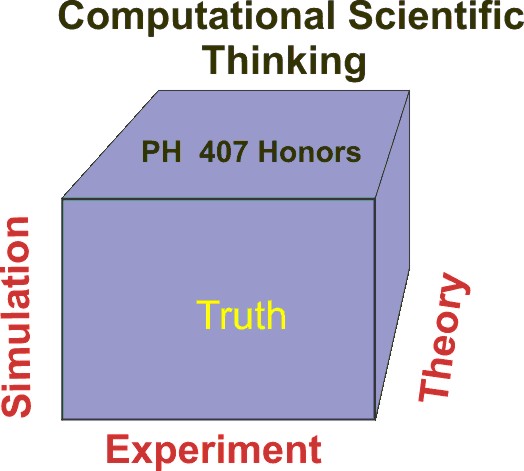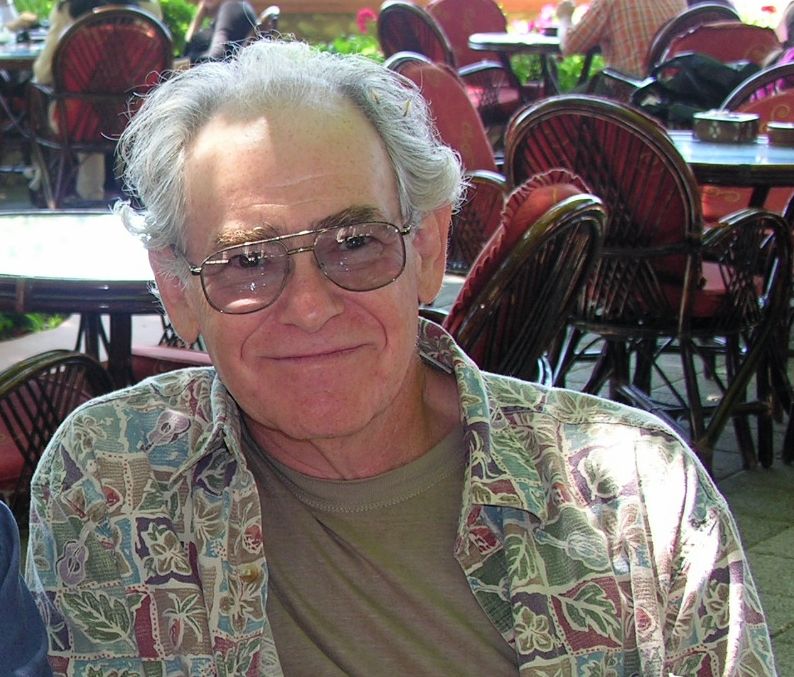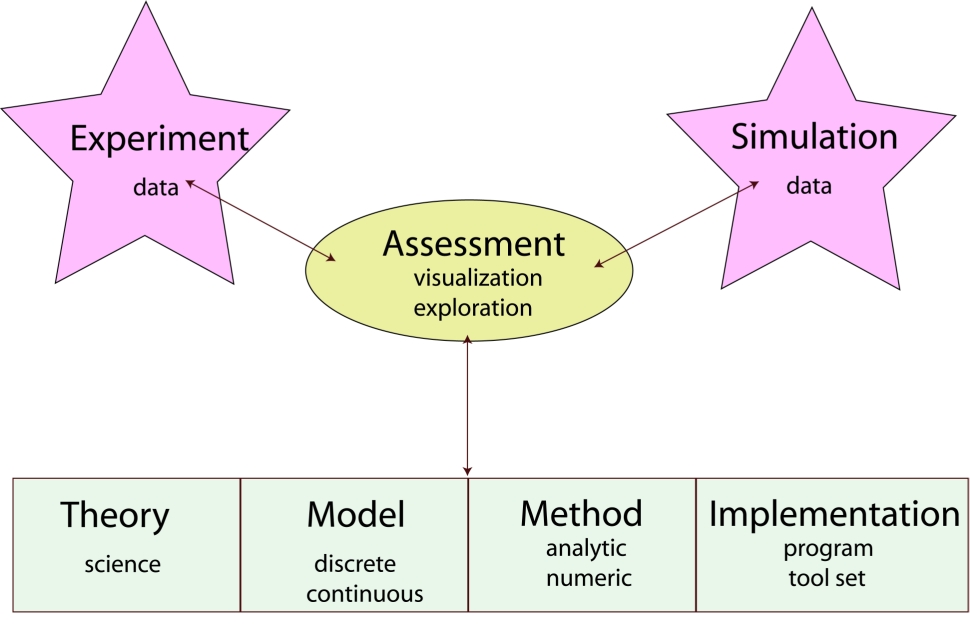 |
|
Honors PH 407
Computational Scientific Thinking
aka Computational Thinking for eScience
aka Computational Thinking
for Gen P*
No prerequisites.
Familiarity with algebra, trigonometry assumed.
© Rubin H Landau, 2009, Oregon State University
*The petascale generation.
|
 |
Course Information
The course focuses on thinking in terms of computational processes, understanding what can be computed, and how computation is used to solve,
model, and analyze problems scientifically. Rejecting the view that only traditional programmers can understand computing, we will look
inside the black boxes of computers and computation, and discover that it is not hard to understand them
if careful attention
is given to explaining what the words mean. Both hardware and software will be
discussed in order to understand how to use them to attack
the multidisciplinary, real-world problems to be faced by
the petascale generation of students.
There will be hands on demonstrations of simulations, visualizations, and management of massive data,
with students taking the class for 2 credits expected to do some programming.
In a Nutshell
- Models in science
- Science, math and CS in context
- Physical Science: numerical
- Art & Humanities: epistemological &
provenance
|
- Practical problem solving
- Abstractions, Objects and Scaling
- How Do vs Study Science
- Biological/med/soc sci: statistical
- Multidisciplinary thinking: all three
|
What is Computational Scientific Thinking?
As
a basic researcher and educator, my values, goals, prejudices and measures of
success differ from Computer Science Computational Thinking
(http://www.cs.cmu.edu/~CompThink/)
and so may be more accurately described as
Computational
Scientific Thinking (CST). In fact, as a consequence of contributing to the Microsoft Research eScience Workshop (research.microsoft.com/en-us/events/escience2008/) and of planning an honors seminar on the subject, I have gathered
some thoughts on the subject.
-
Computational scientific thinking
(CST) is using simulation and data
processing to augment the scientific method’s search for
the
truth and for the realities hidden within data and
revealed
by abstractions
-
Computational scientific thinking (CST) is using simulation and data
processing to augment the scientific method’s search for the
truth and for the realities hidden within data and revealed
by abstractions.
- How simulation, visualization,
data analysis and abstraction serve the scientific method’s
search for mechanisms, relationships and (ultimately) the
truths and realities hidden within data.
- Why it is important to
understand the multiple disciplines needed to solve a
problem, and how one can understands them more easily when
they are placed in context. This entails learning the human
and computer languages of the multiple disciplines,
respecting their values, and trading in good faith.
- Why it is important for a CST
practitioner to have the confidence to look inside the
computing black box and to have the courage to be non-expert
on some parts of a problem.
- Why it is more important for a
computational scientist to have an accurate and reliable
answer to a particular problem than the fastest one, and why
this is often surprisingly hard.
-
Why a scientifically “correct” answer may contain uncertainties and indeterminacies.
-
Why a mathematically “exact” solution may not be as “correct” as an
approximate solution.
-
How simplicity may be present in
complexity, once we expand the way we look at objects
-
How abstractions can lead to
simplicity.
Does concept mapping of a
knowledge field change and improve how a person
understands it
CST requires an undergraduate curriculum imbued with computation, in which
existing courses from multiple disciplines are glued together via new computational science courses; the
BS degree program in Computational Physics at Oregon State University
(see below) is an example of this. However, providing an education that prepares
students for the upcoming petascale computing will require further
(computational) thinking.
Computational Physics for Undergraduates Courses



